Best aero road bikes 2025: The fastest road bikes tested and reviewed
The best aero road bikes will help you to ride faster for less effort
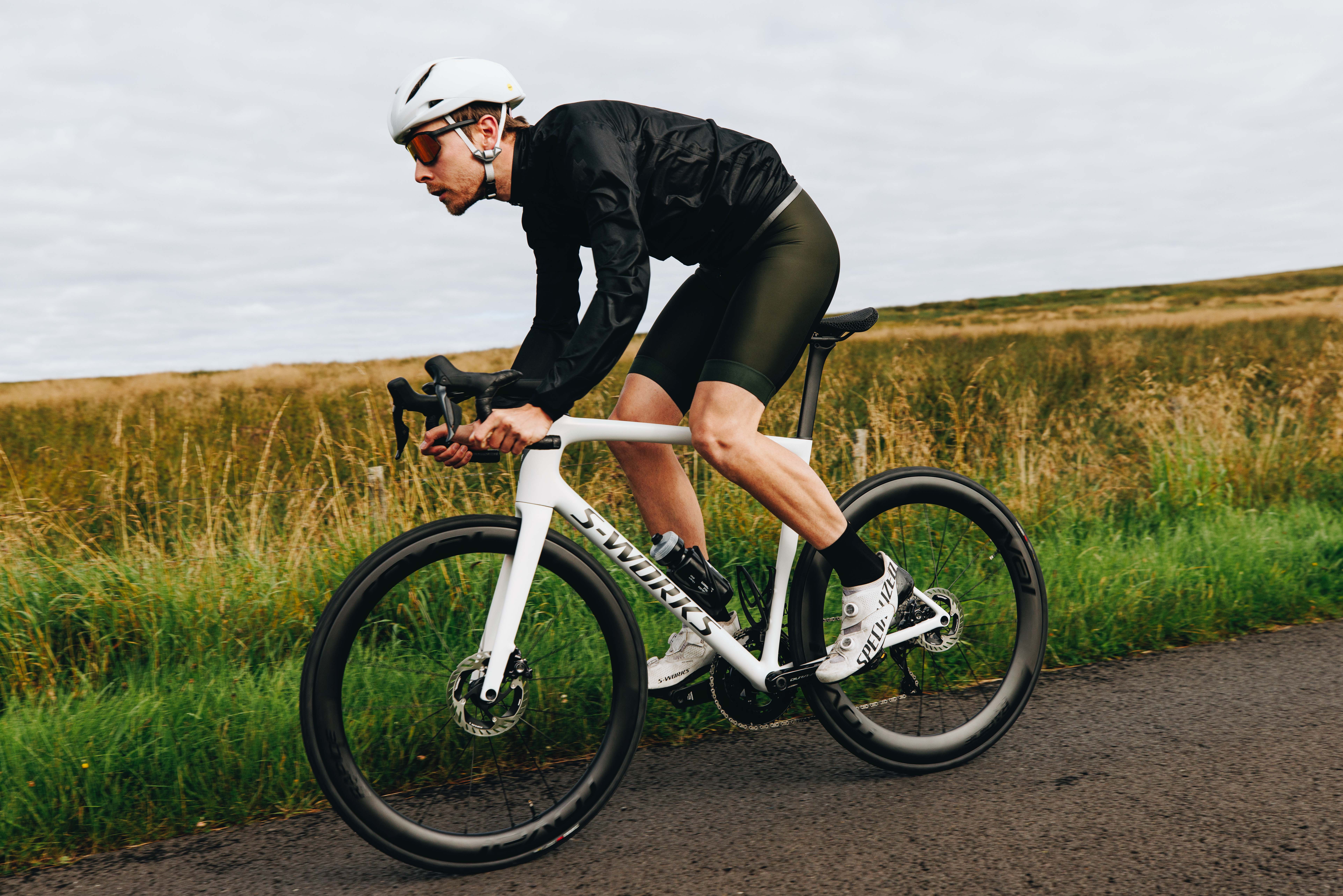
The best aero road bikes offer advanced aerodynamic performance alongside a comfortable ride and great handling.
We've ridden and reviewed all the aero road bikes below and we've also taken the majority of them to the Silverstone Sports Engineering Hub's wind tunnel, so we've got the independent wind tunnel tests to back up the makers' aero claims.
An aero road bike is a compelling choice if you're looking for the best road bike for your next purchase. Even though pro-level builds are very expensive, most brands will offer a range of more affordable bikes with lower-spec frames and builds.
Modern aero road bikes are much more forgiving to ride than their predecessors. That's chiefly because bike makers have concentrated their aerodynamics on the front of the bike, where the air is smoother. At the rear, there are fewer aero gains to be had, so aero bikes have thinned out there, adding ride comfort.
They're also lighter as a result, with many close to the UCI 6.8kg weight limit and matching the best lightweight bikes. In fact, the two categories have merged in many cases, although more recent changes to the UCI's tube section rules have allowed brands to design bikes which are again more out-and-out aero.
Read on for our pick of the best aero road bikes, or head to the bottom of the page where we answer some of the most common aero bike questions.
Best aero road bikes: Quick list
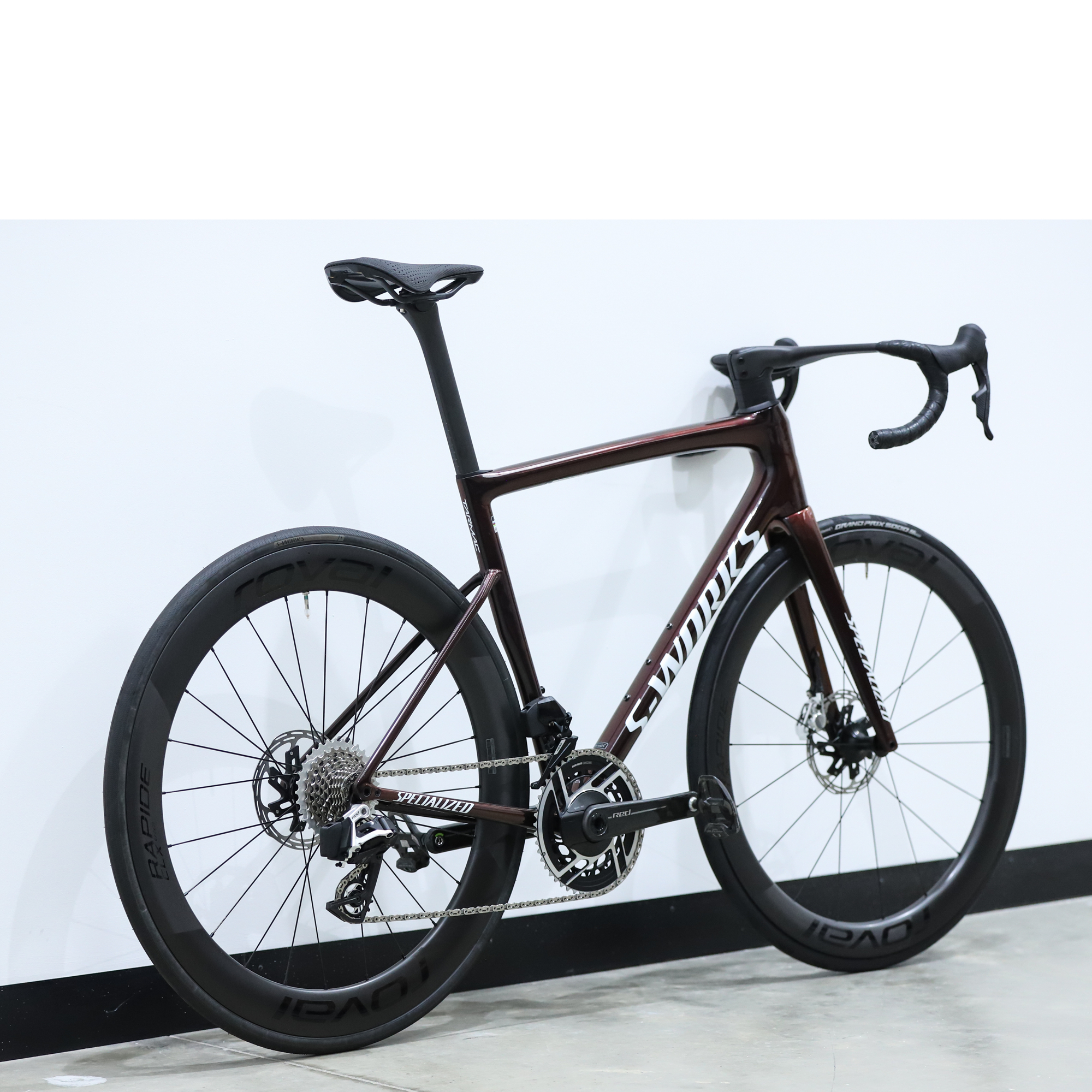
The Tarmac SL8 combines high-end aerodynamics with a weight that skims the UCI weight limit.
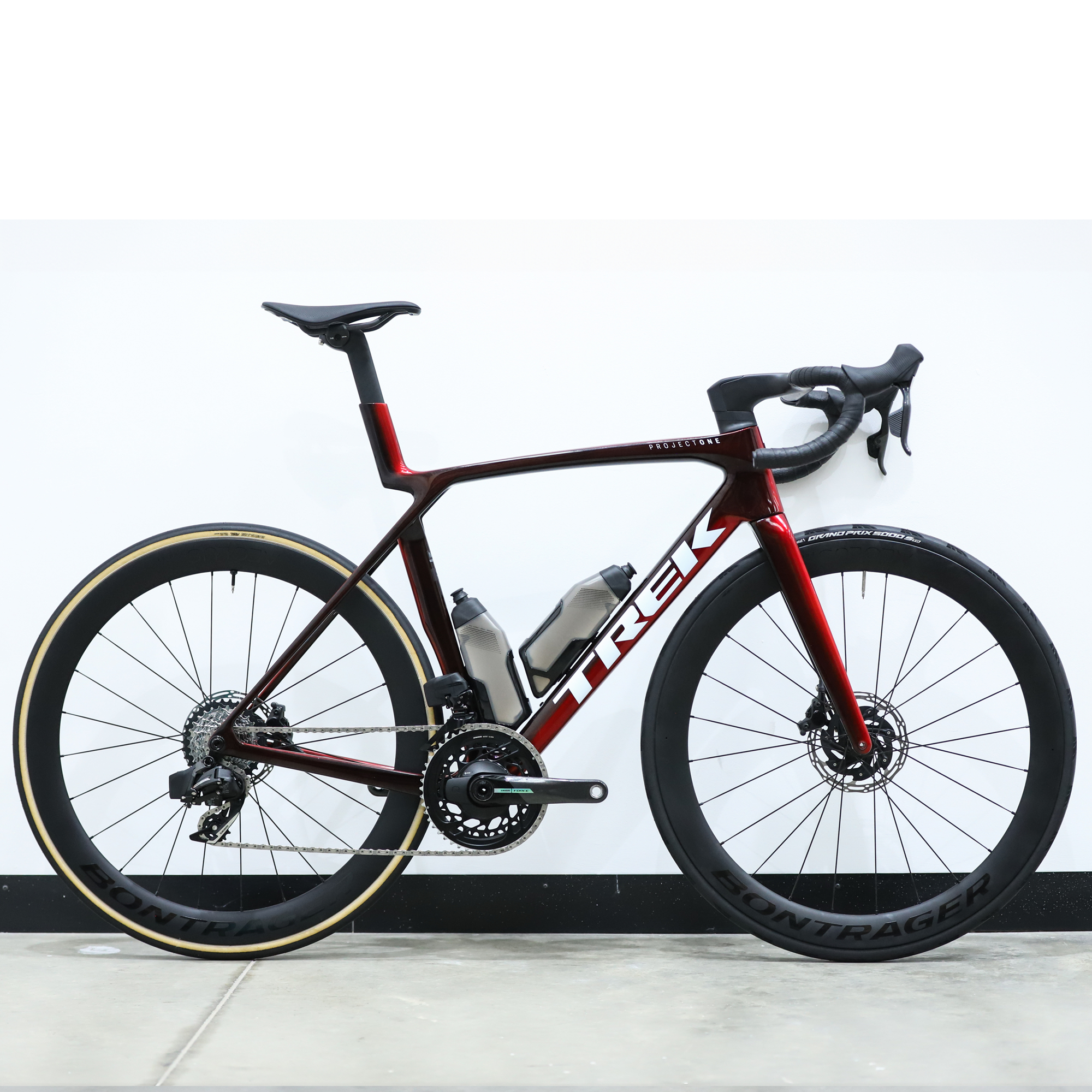
The Gen 8 Madone is as aero as its predecessor, while losing a chunk of weight.
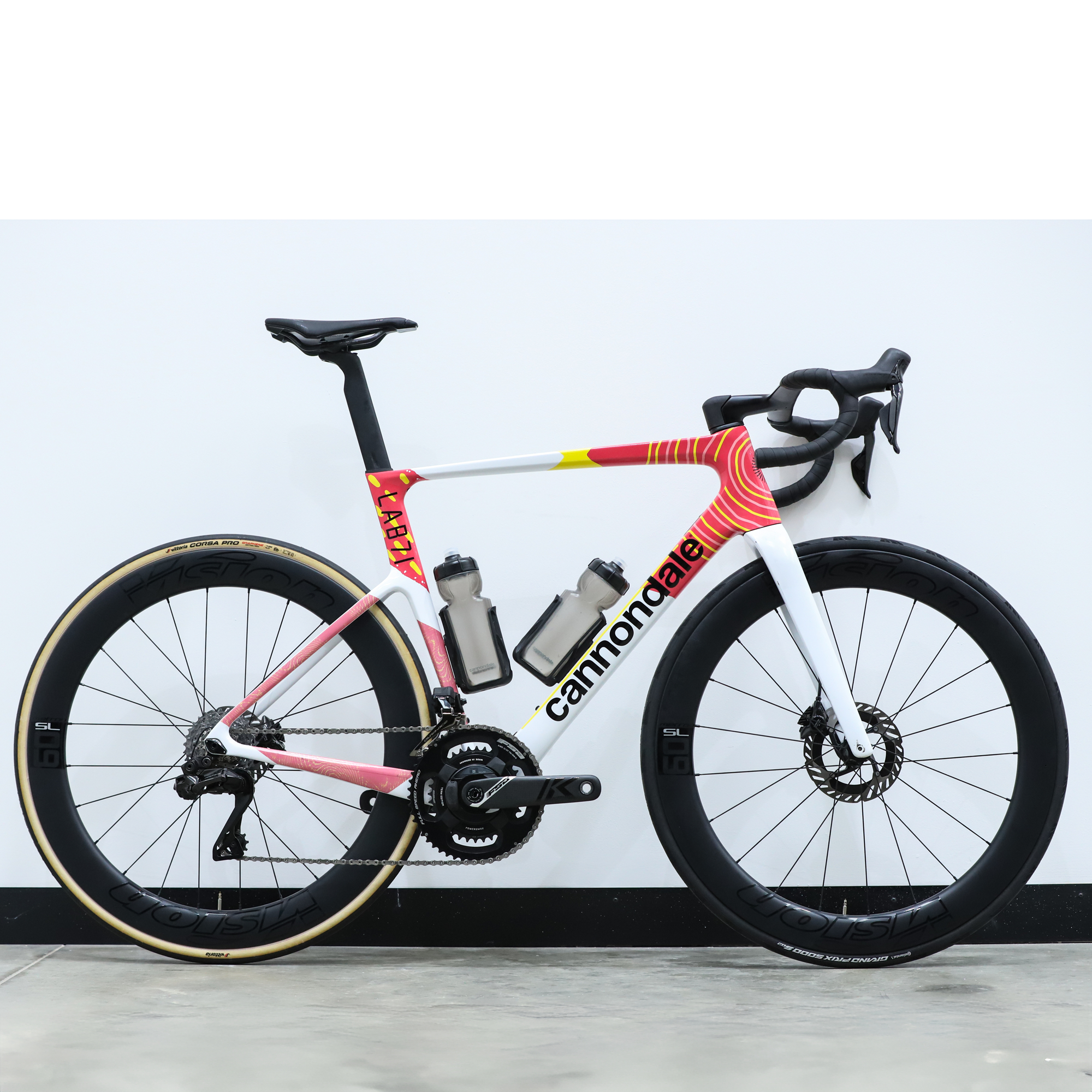
The SuperSix Evo combines aerodynamics with real world rideability.
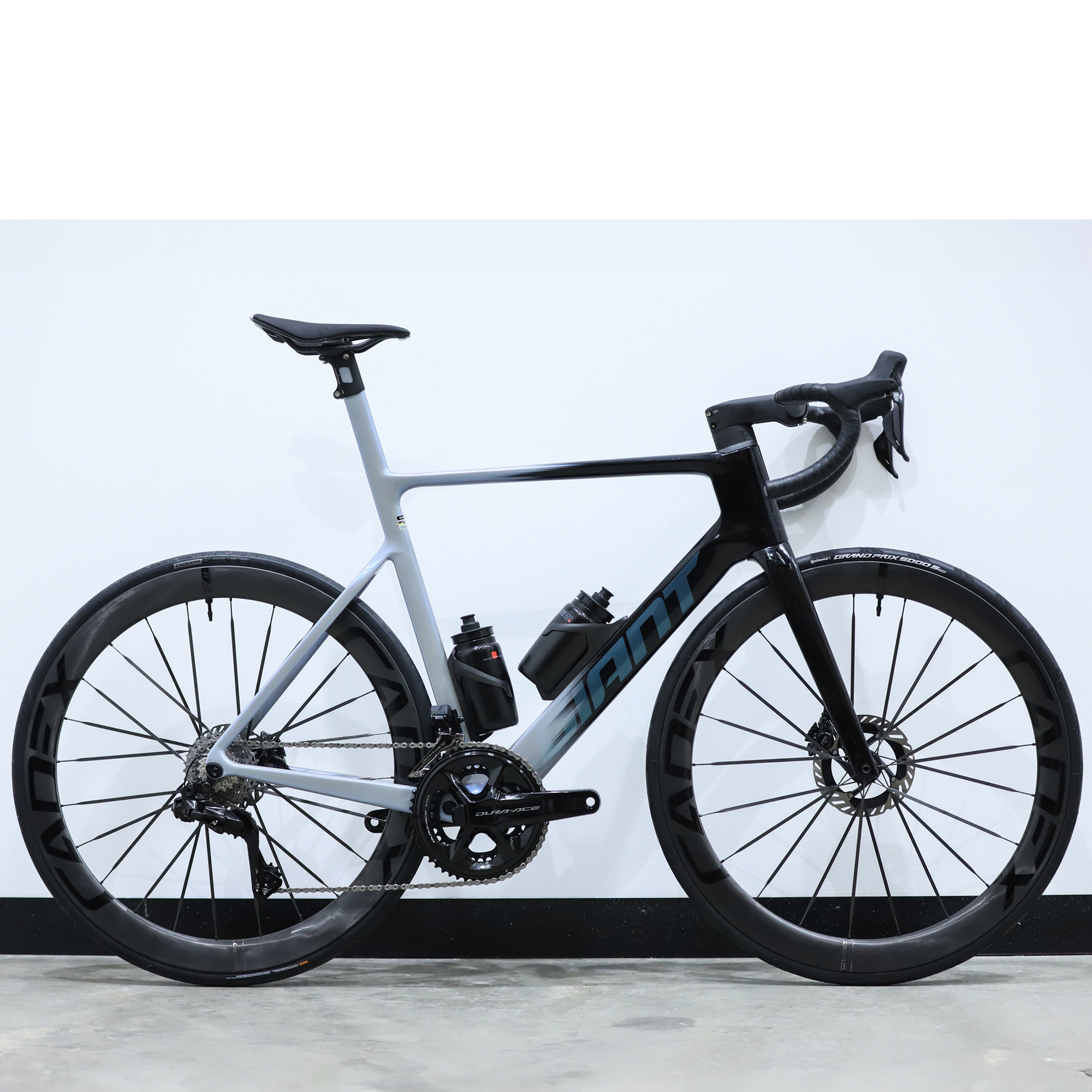
The Propel is more aero and faster than its somewhat plain looks suggest.
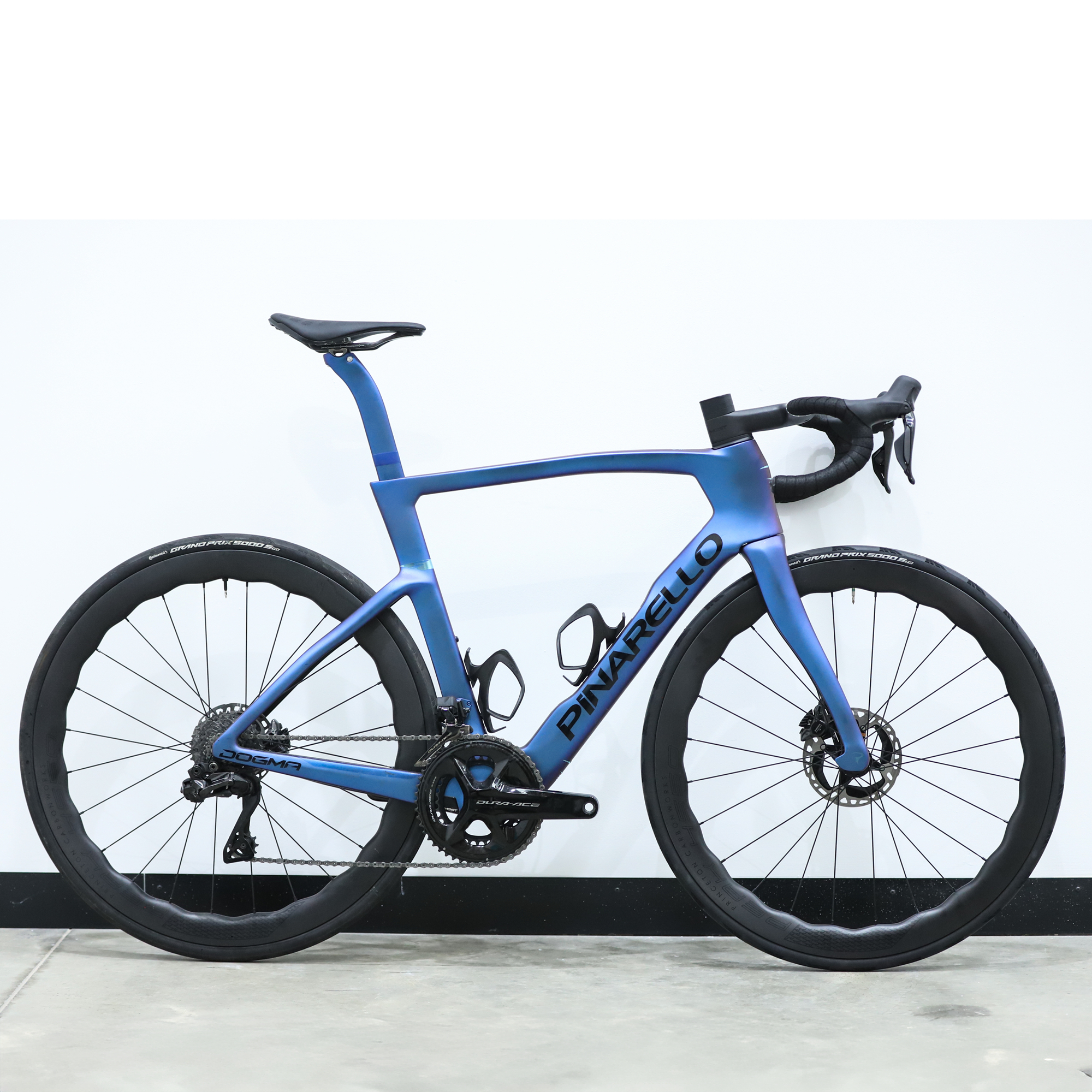
The Dogma stands out for its ride quality and telepathic handling.
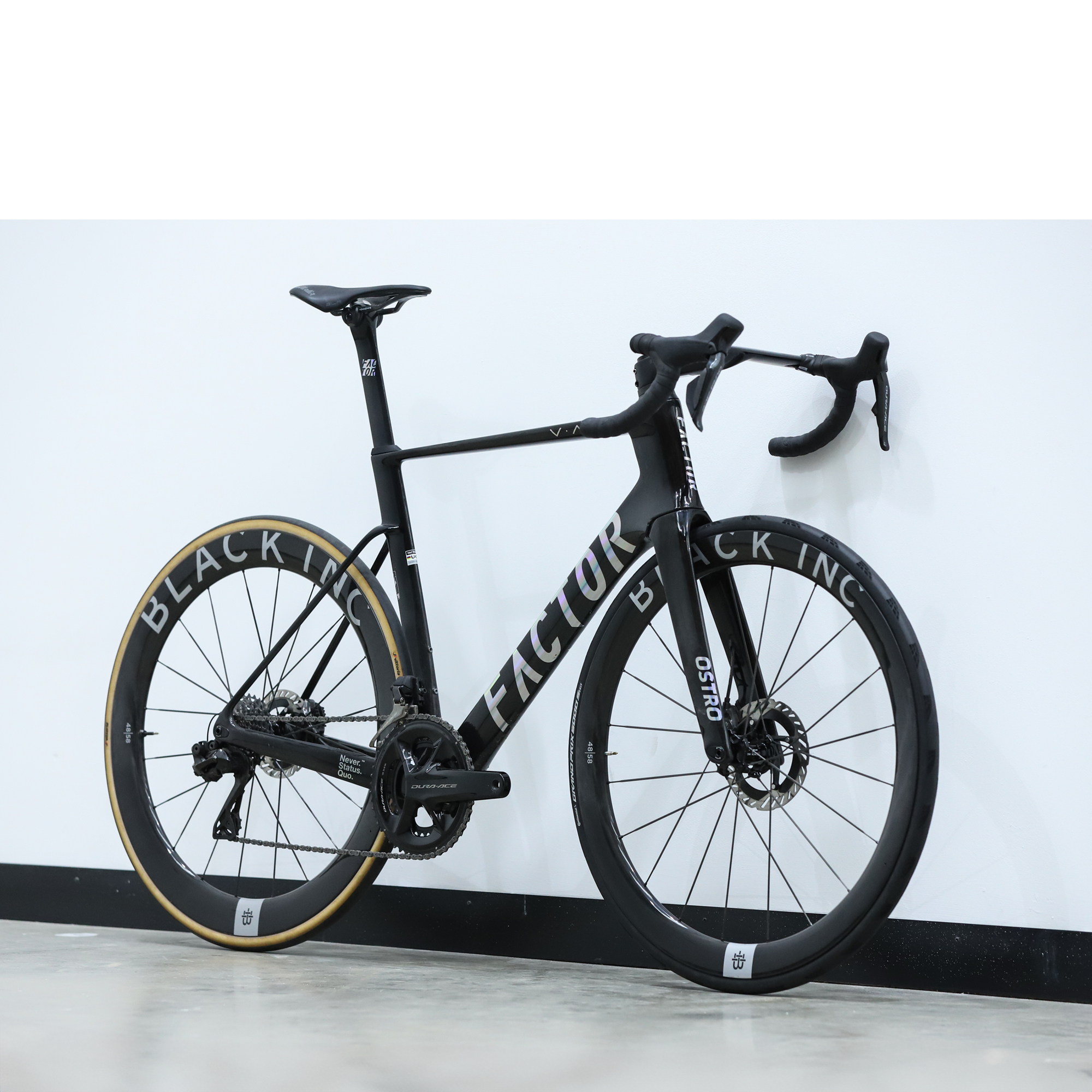
The Ostro VAM is one of the most aero bikes in our test, but still low in weight
Recent updates
Last updated on 04th of April 2025
General refresh of the guide ensuring that all the products and information are up to date and available with new reviewed and tested products have been added. The guide also received a format update to streamline the buying advice and aid navigation.
Best aero road bikes
Best overall
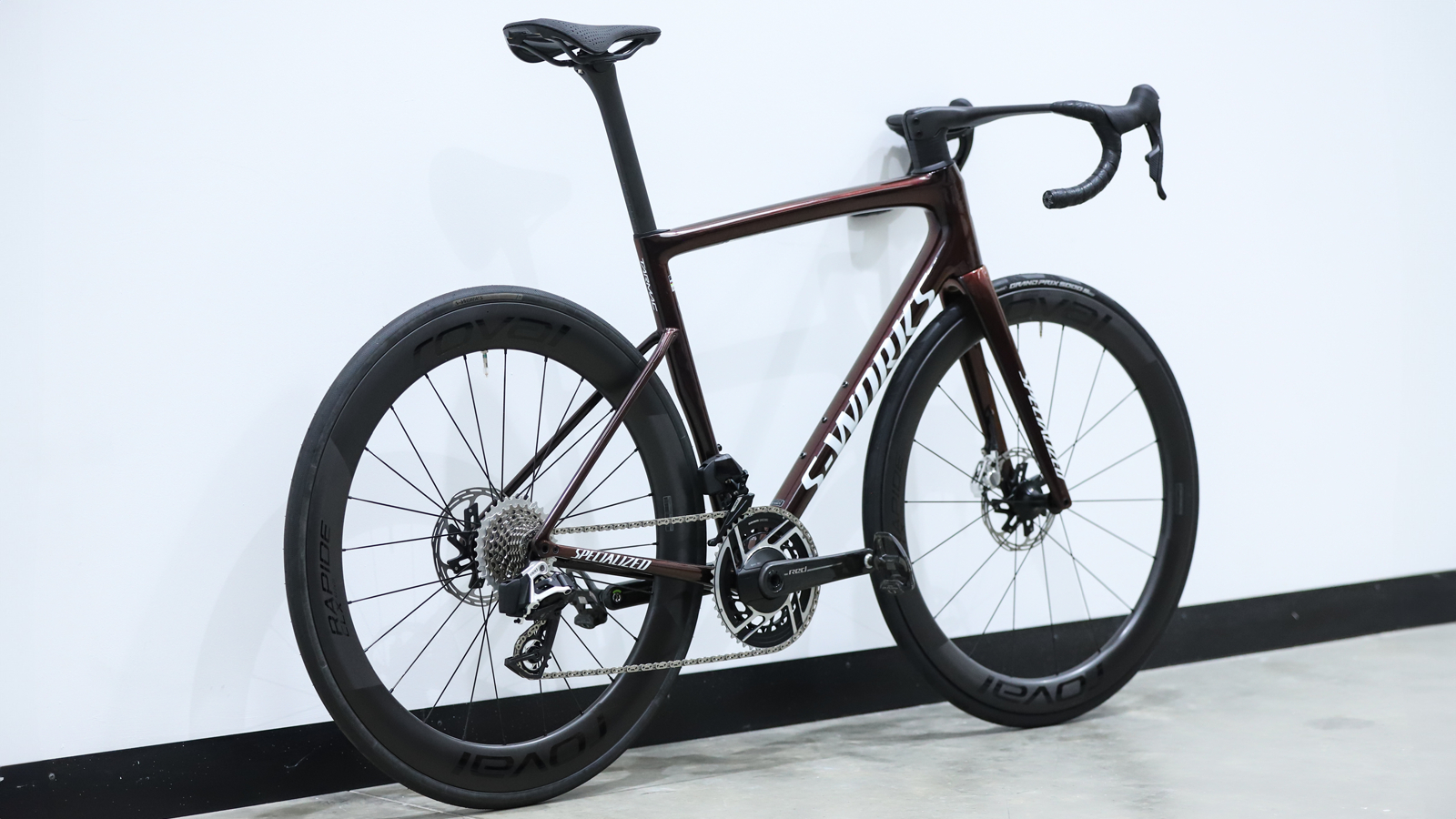
Specifications
Reasons to buy
Reasons to avoid
✅ You want low weight and aero: The SL8 was the lightest and most aero in our superbike test.
✅ You want sharp handling: We were impressed by the SL8's handling and stiffness.
❌ You want to choose your component specs: You get the bar width and stem length that Specialized gives you.
❌ You want cheaper options: The SL8 range is all top end.
Specialized pared down the weight of the Tarmac and made it even more aero with the SL8. Our size 58 S-Works bike came out at 7.18kg, the lightest of eleven superbikes we wind tunnel tested. With a rider aboard, it was also the most aero.
The weight loss comes from a slimmed-down rear half to the frameset, which also makes the Tarmac SL8 a more comfortable ride than the SL7, without detriment to the performance on offer. Meanwhile, the aero gains are from the Speed Sniffer head tube and one-piece bar/stem on the S-Works bikes. There's clearance for 32mm tyres.
Handling stands out, with exceptional cornering and rear-end stiffness for climbs and sprints. As a pedalling platform it's rock-solid too, without beating you up.
Disappointingly, Specialized doesn't let you choose your component sizes. Ride a size 58 frame, as Josh does, and you'll get 44cm bars and 175mm cranks, although you can buy both the FACT 12r and FACT 10r frames frameset-only. There's not a lot of depth to the range either, so even at entry level, which is around half the price of the top spec S-Works bike, the Tarmac SL8 is pricey.
Read our full Specialized Tarmac SL8 review for more details.
Best for innovation
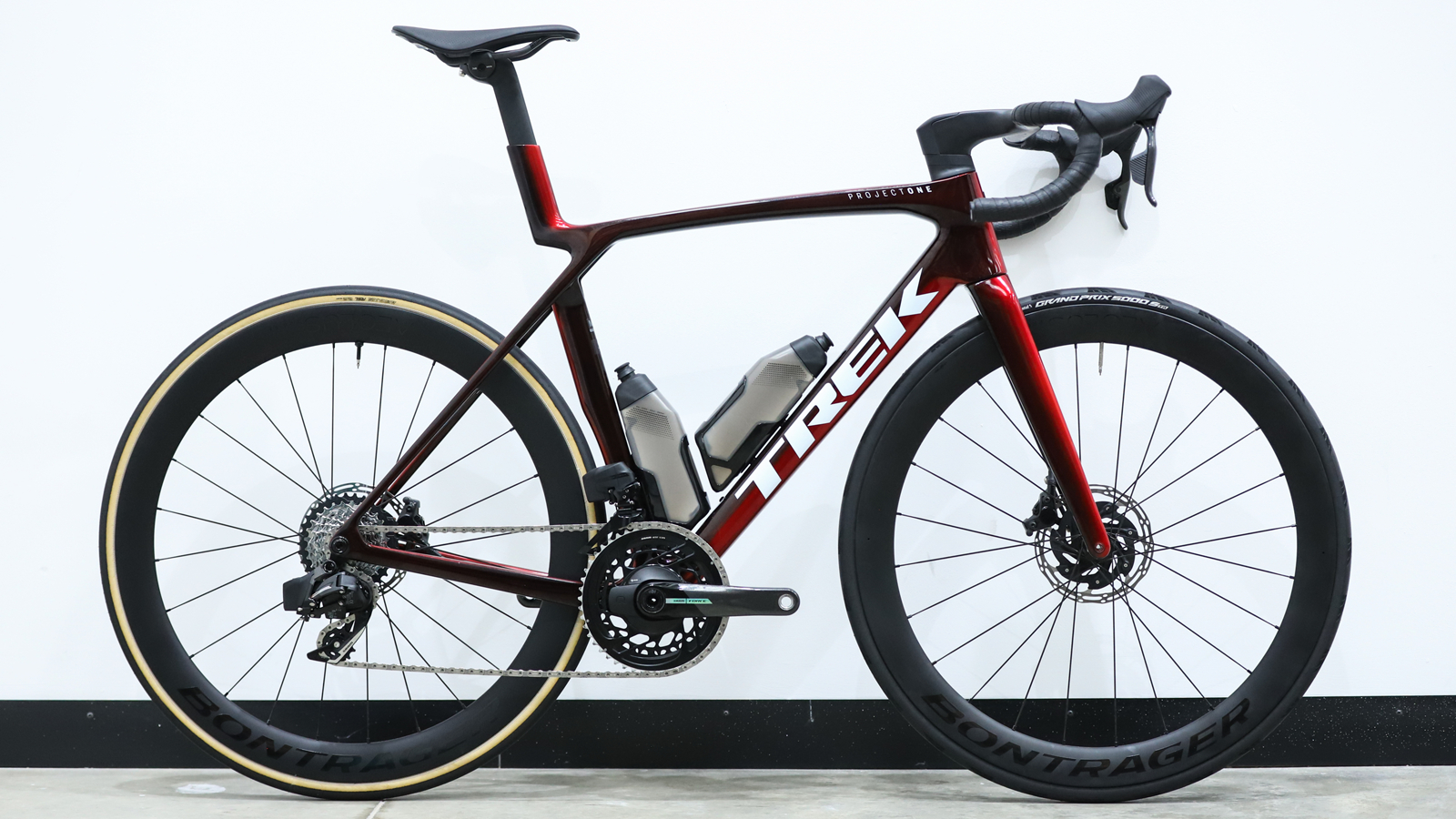
2. Trek Madone Gen 8
Specifications
Reasons to buy
Reasons to avoid
✅ You want great ride quality: The slimmed-down frame is more comfortable than the Gen 7 bike.
✅ You want a good spread of prices: Although the top spec bike is expensive, Trek offers more affordable SL 5 options.
❌ You want the best aero performance: The Madone Gen 8 was mid-pack in our testing.
❌ You want easier drinking: The slab-sided bottles are a bit awkward to use.
Replacing both the aero Madone Gen 7 and the lightweight Emonda, the Gen 8 Madone applies the lightweight/aero formula to Trek's aero bike, shedding weight via a slimmed down frame which still retains the Isoflow seat tube cavity which made the Gen 7 bike so distinctive.
You also get the flared handlebars, which help you to hunker down in a more aero position, although in a new version that's thicker and easier to grasp. There are more aero gains from the slab-sided bottles and their cages, although these will also accommodate standard round ones. When we aero tested the bike with the bottles in place, it came out mid-pack, although it performed better with a rider aboard.
You can fit 33mm tyres and there's reasonable depth to the range, with the SL 5 bike fitted with Shimano 105, even if the top spec SLR 9 bike is eye-wateringly expensive.
With the lower weight, the Gen 8 Madone feels more sprightly than the Gen 7 bike and akin to the Emonda in ride quality. It feels fast on the flat and encourages you to push the speed on descents. Isoflow smooths bumps in the road well too.
Read our full Trek Madone Gen 8 review for more.
Best all-rounder
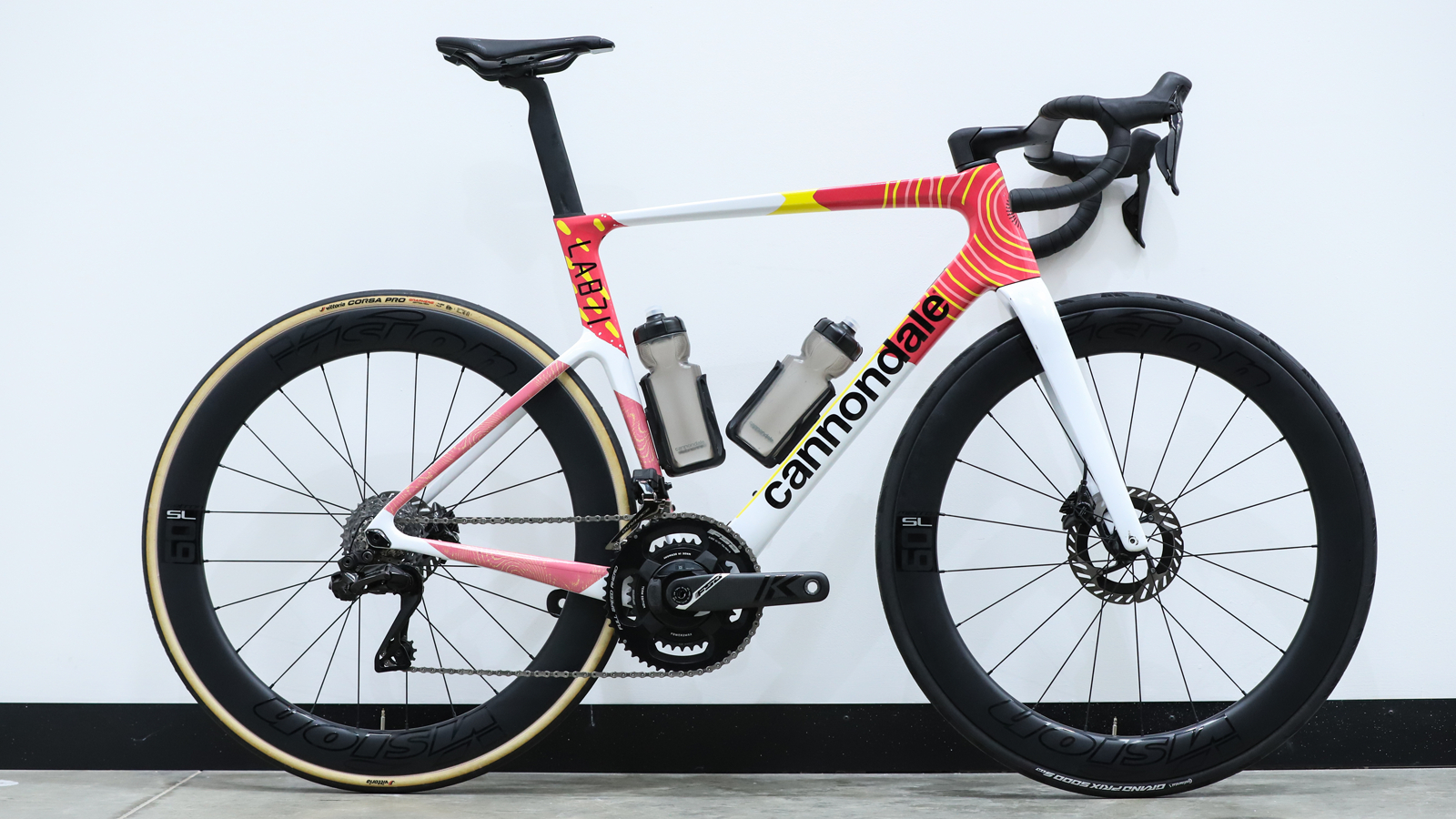
Specifications
Reasons to buy
Reasons to avoid
✅ You want aero with comfort: The SuperSix Evo is fast, but still comfortable for long rides.
✅ You want easy maintenance: Cannondale has reverted to a BSA bottom bracket.
❌ You want a power meter: Even top spec models aren't fitted with one.
❌ You want the most aero bike: The Cannondale came out mid-pack in our aero tests.
The fourth-generation SuperSix Evo has returned to basics, with a BSA bottom bracket, while still managing to be a claimed 12 watts more aero than its predecessor. The frontal profile is now so narrow that Cannondale has a slot in the down tube for a Di2 battery, as it won't fit in the seat tube.
While competitors increase the reach and lower the stack for aero gains, Cannondale has done the reverse, making the SuperSix Evo an easier ride. It's also introduced a LAB71 version, that's lighter and also very expensive.
The SuperSix Evo manages to be light, efficient and comfortable as well as fast, although it was only mid-pack in our wind tunnel testing, both with and without a rider aboard. There's room for 30mm tyres and it's an exciting and enjoyable bike to ride as the SuperSix's legendary ride qualities continue.
Read our full Cannondale SuperSix Evo Hi-Mod review for more.
Best understated aero
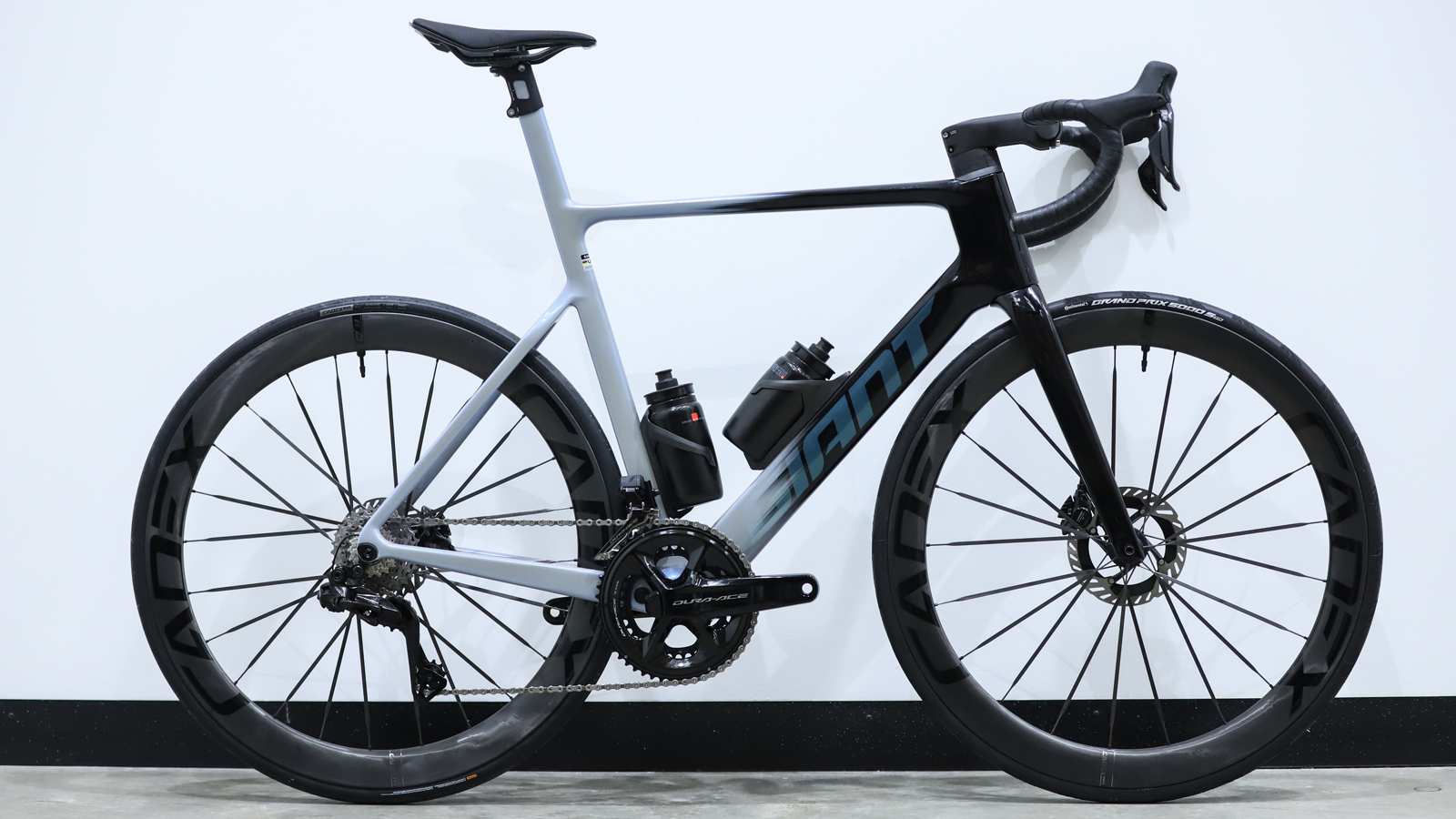
Specifications
Reasons to buy
Reasons to avoid
✅ You want an aero all-rounder: The Propel is comfortable and controlled.
✅ You want bar adjustability: The two-piece bar and stem are unusual on modern aero road bikes.
❌ You want all-in aero: The Propel feels as if it needs deeper wheels than the fitted 50mm depth Cadex numbers.
❌ You want wider tyres: 25mm feels narrow now.
As with the Trek Madone, the Giant Propel slimmed down for its 2022 redesign, although unlike Trek, Giant has chosen to keep a less aero lightweight race bike in its range, the long-running TCR.
Giant offers the Propel in three frame grades. The top spec SL frame has an integrated seatmast, which Giant says saves weight and makes the frame stiffer, although it also somewhat limits adjustability.
The SL bikes are expensive too, although the base model Propels are more affordable and available in a wider range of sizes. On the plus side, even the SL has a two-piece bar and stem, allowing adjustments that aren't possible on a one-piece unit.
The Propel was towards the bottom of the range for the aero bikes we wind tunnel tested, although the differences were marginal and it did better at high yaw angles with a rider aboard.
The 30mm tyre clearance now feels on the narrow side, as do the 25mm tyres fitted. Despite this, the Propel feels comfortable to ride, although a little lacking in agility and with a more muscular ride feel. We felt it benefitted from deeper wheels than the Cadex 50s that the SL 0 came with.
You can read more in our Giant Propel SL 0 review.
Best ride quality
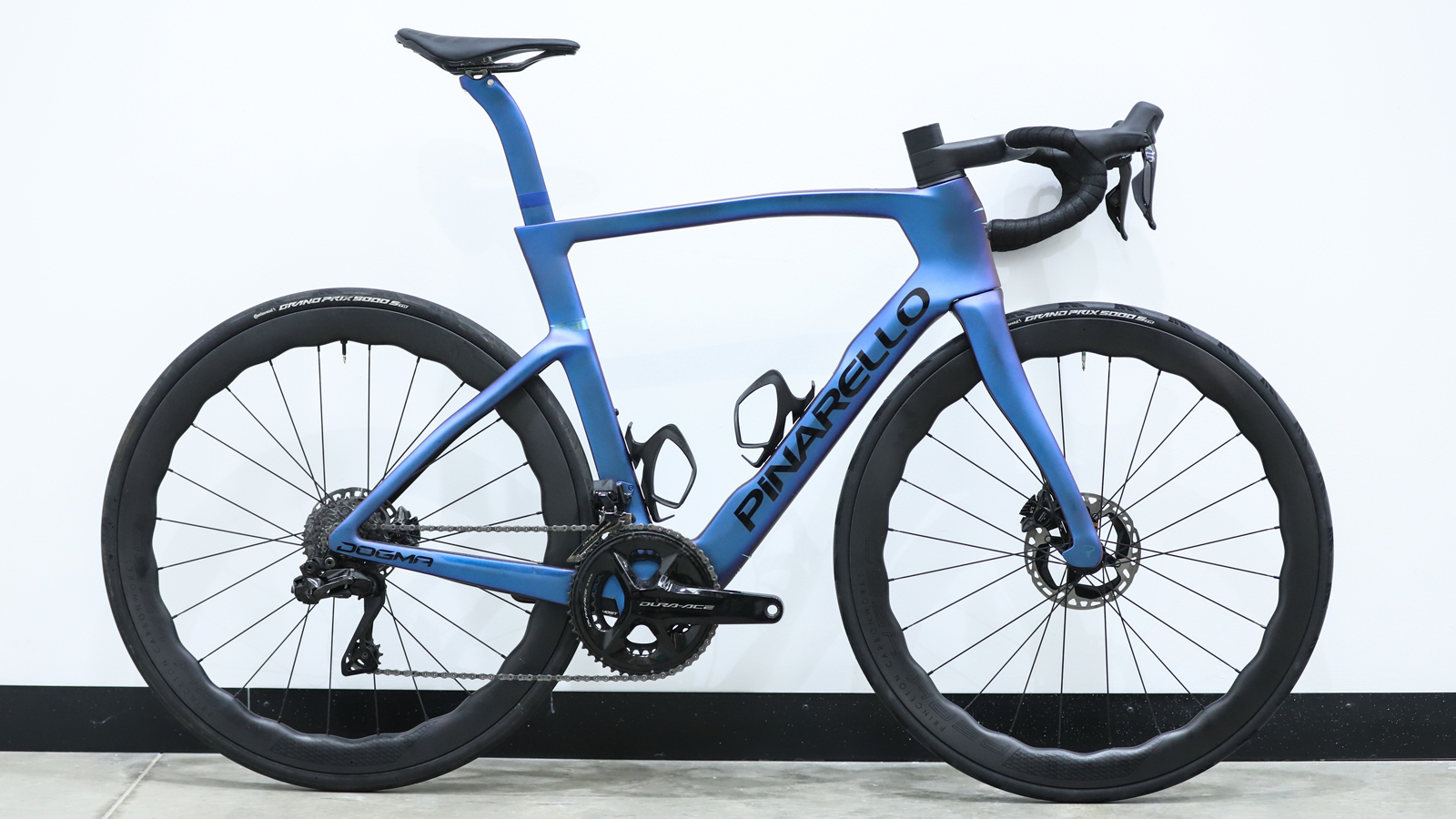
5. Pinarello Dogma F
Specifications
Reasons to buy
Reasons to avoid
✅ You want head-turning looks: The Dogma F remains an object of desire for cyclists.
✅ You want fantastic handling: The Dogma F has the performance to back up its star billing.
❌ You want to blend in: Even many non-cyclists recognise the Dogma F and know it's very expensive.
❌ You want cheaper options: All Dogma F builds carry top-tier prices.
Pinarello continues to tinker with the Dogma formula, with an upgrade in 2024 that was so slight it was difficult to discern, although it does garner tiny aerodynamic improvements and a slight weight drop.
The ultra-skinny front profile is now augmented by a 'keel' ahead of the bottom bracket and there's a new one-piece bar/stem with the now mandatory flare that we found more comfortable and that's available in a wide range of sizes.
Handling is fantastic, as is the speed on even the toughest terrain. Wind tunnel performance was up with the best in our tests and the bike was one of the lightest, although the Dogma F was also the most expensive bike of the 11 tested.
All Dogma F specs are pricey, although Pinarello does sell lower spec F series bikes based on the previous generation frameset.
Read our full Pinarello Dogma F review feature for more.
Best mix of low weight and aero
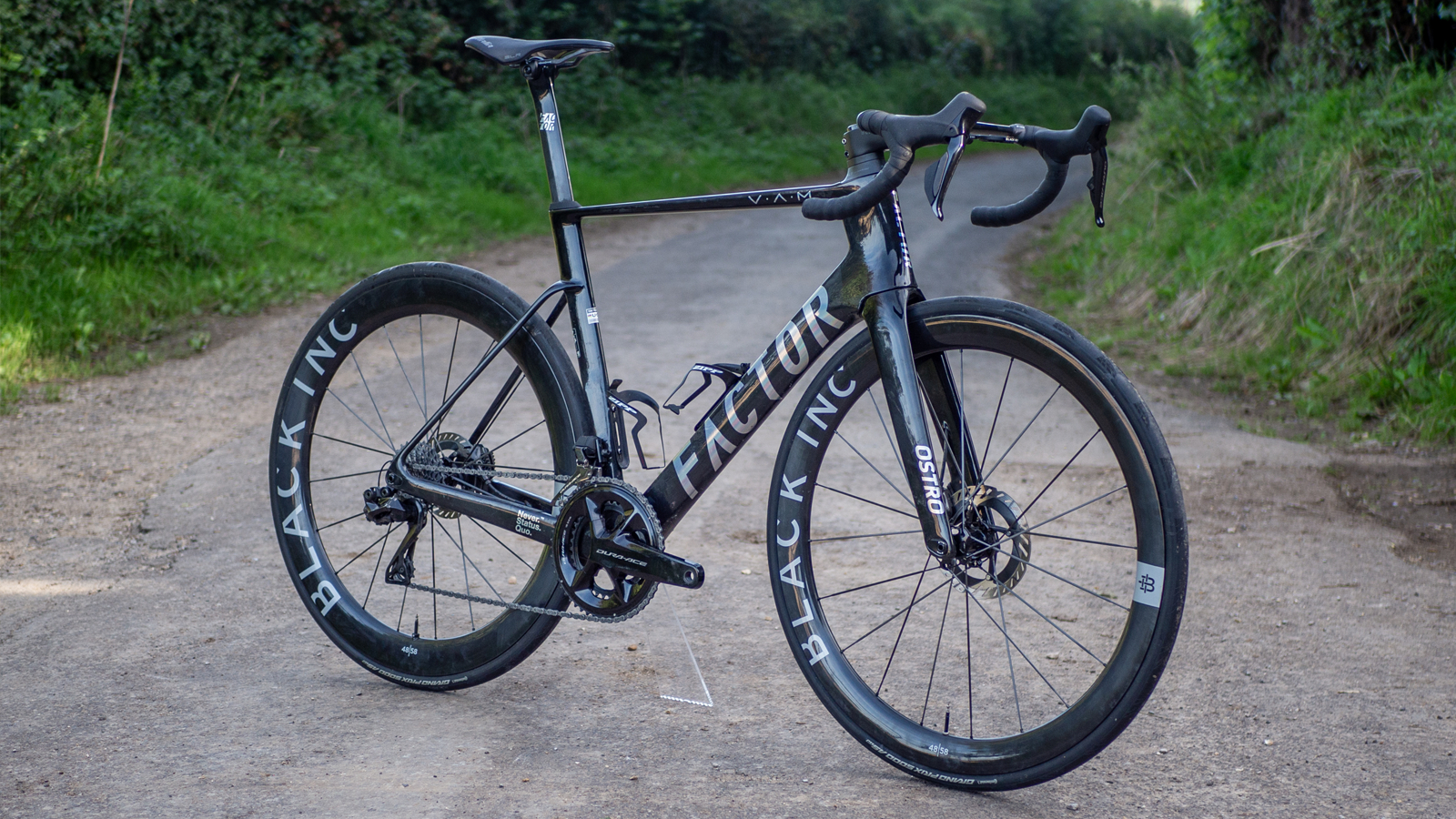
Specifications
Reasons to buy
Reasons to avoid
✅ You want outstanding aero performance in an all-rounder: The Ostro VAM delivers top aero performance but is easy to live with.
✅ You want options: Over 60,000 colour combos and choices of groupset, bar width and more give you the bike you want.
❌ You want an easy purchase: There's only one UK distributor and bikes are built to order in Taiwan.
❌ You want a power meter: This isn't standard even in premium builds.
The second generation Factor Ostro VAM combines low weight with impressive aero performance that was the best weighted average in our wind tunnel tests, even without the go-faster aero bottle cages that the bike normally ships with.
The Ostro VAM frameset has elongated tube sections at the front, but a more thinned-out rear and skinny seat stays adding comfort. It's also very narrow in cross-section and is paired with wheels from Black Inc that we weighed at just 1,296g.
The rather in-your-face combination of the multiple big logos on both the frame and the wheels on the review bike may not be to everyone's taste, although we garnered approval. You can tone both the frame and the wheels down (or up) with Factor's 60,000 custom Prisma Studio options though.
You can also choose configuration items such as crank length and bar/stem dimensions and select less expensive SRAM or Shimano groupsets. CeramicSpeed bearings, including its SLT headset should help maintenance costs.
Factor has an abundance of riches, with the aero lightweight O2 VAM equally as impressive as the lightweight aero Ostro VAM. You can read our Factor Ostro VAM review for more details of the bike and why we didn't want to give it back at the end of testing.
Best for adjustability
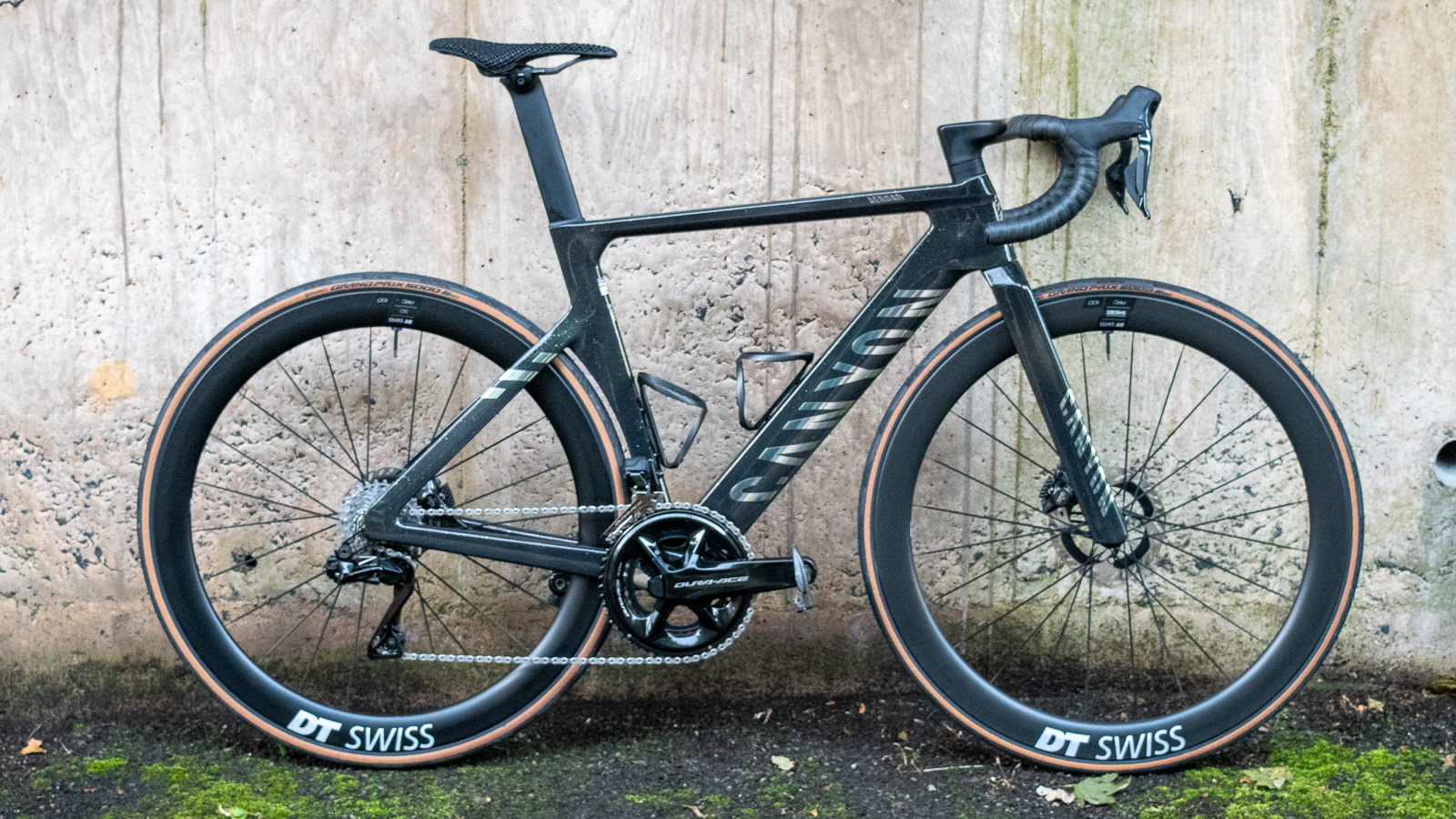
Specifications
Reasons to buy
Reasons to avoid
✅ You want easy bar width adjustability: Canyon's bar width and profile can be altered by the user.
✅ You want a good value aero bike: Canyon's specs are always very competitive.
❌ You want a smoother front end: The 25mm tyre fitted at the front leads to a slightly harsh ride feel.
❌ You want to try before you buy: Despite Canyon now partnering with some retailers, opportunities to view the Aeroad are still limited.
The fourth-generation Canyon Aeroad has modest updates from the third, including a repositioning of the seatpost clamp and tube profile changes, which have made it among the most aero in our tests.
Canyon's bars can be adjusted in width, which also makes the bike easy to travel with. You can buy aftermarket flared bar-ends if you want to get even more aero. All but the Zipp wheeled specs ship with a 25mm front and 28mm rear tyre, which Canyon found was most aero. This does lead to some front-end harshness in what is otherwise a comfortable, capable bike.
There's a decent range of specs, although Canyon doesn't offer the Aeroad in its lowest CF SL carbon, starting with CF SLX. Canyon offers deep-section carbon wheels across the board and all but the lowest spec CF SLX 7 AXS are equipped with a power meter, although this is single-sided in less expensive builds.
You can read more in our Canyon Aeroad CFR review.
Best affordable aero race bike
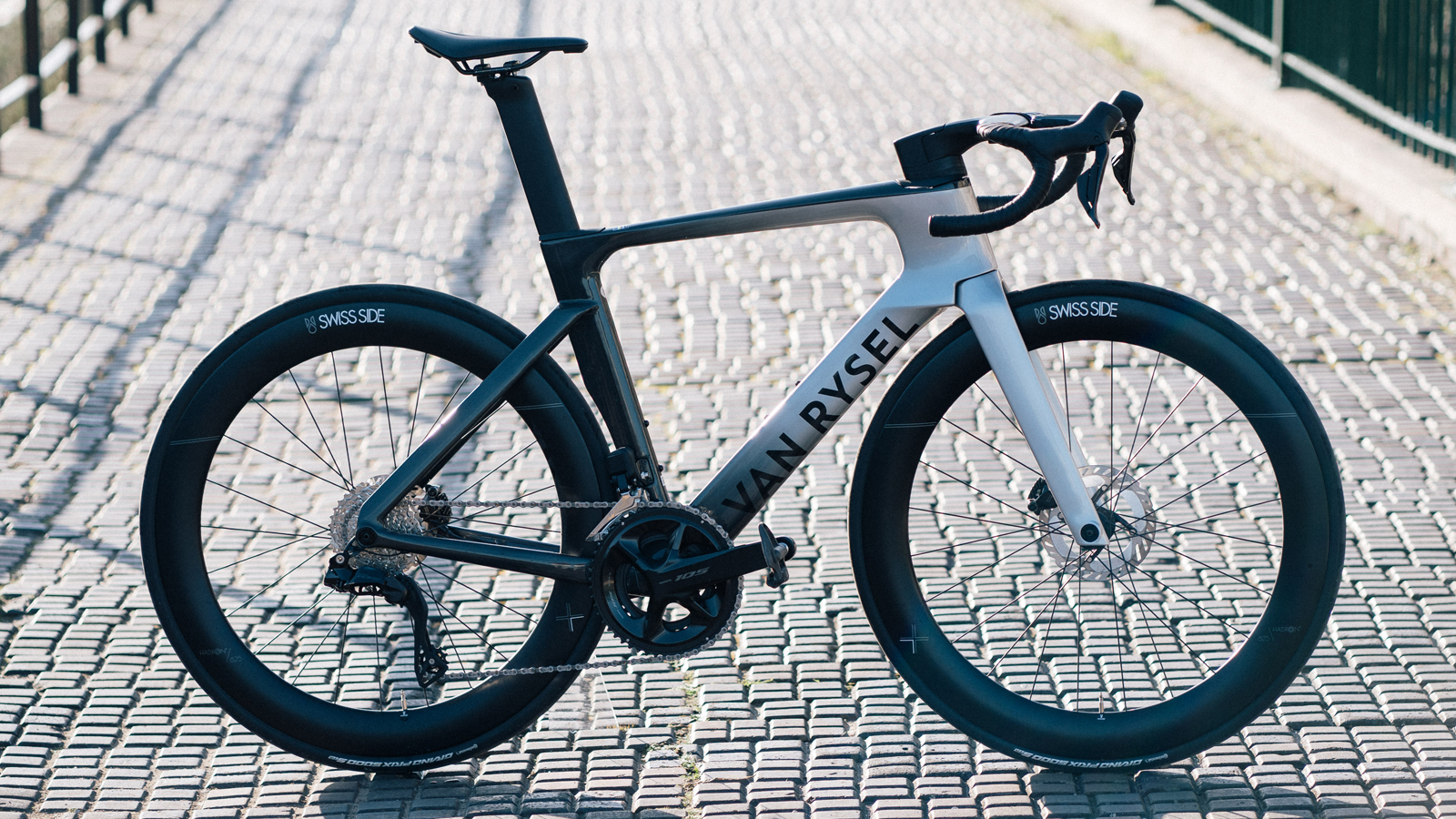
Specifications
Reasons to buy
Reasons to avoid
✅ You want pro-level aero: The RCR-F feels very fast and is claimed to be more aero than the RCR Pro.
✅ You want sprint performance: The stiff front end is great for sprints.
❌ You want less drop to the bars: The stack height is very low and may not suit some riders.
❌ You want more all-round aero: The RCR or RCR Pro may be a better buy from Van Rysel as an all-rounder.
Decathlon lit up the internet with the 'affordable' RCR Pro when it debuted in the pro peloton, although the lower spec non-Pro bike that we reviewed is priced more in line with competitors. When we wind-tunnel tested the RCR Pro, it was competitive with the best aero bikes.
The RCR isn't actually Van Rysel's aero road bike though and it's since launched the RCR-F dedicated aero road bike, which we've also ridden although in early 2025 we've not yet taken it to the wind tunnel. Van Rysel claims a 13-watt saving over the RCR.
The RCR-F's more muscular tube sections, along with a stack that's around 20mm lower, should up the aero quotient over the RCR. But we reckon the front end, which is significantly lower than many other pro-level bikes, may be too low for many amateurs.
The performance is ripping fast, assisted by a 65mm deep Swiss Side wheelset, although the 25mm width front tyre makes for a jarring ride on UK roads. There's space to fit 32mm tyres, which should improve things. The 8.5kg weight for the 105 Di2 spec is okay, but you can chop this down to around 7.5kg with an upgrade to Dura-Ace, so the RCR-F's weight is competitive.
You can read more of our impressions of the Van Rysel RCR-F in our review.
Best integration

Specifications
Reasons to buy
Reasons to avoid
✅ You want narrower bars: BMC fits 36cm wide bars for aero benefits.
✅ You want a power meter: All specs include a crankset power meter as standard.
❌ You want lighter wheels: DT's deep-section wheels are quite heavy and narrow.
❌ You want more spec options: All four Teammachine R specs are expensive.
Designed with the help of Formula 1 engineering consultancy Red Bull Advanced Engineering, the Teammachine R is BMC's aero bike that sits alongside its Teammachine SLR lightweight all-rounder and is claimed to be 19 percent more aero.
The fork legs have a wide stance and accommodate 30mm tyres, the bottom bracket is massive, the bar/stem is narrow and there's even a race number holder integrated into the seatpost. Spec-wise, BMC includes a power meter in all four builds and there are 62mm deep DT Swiss wheels.
Weight-wise, the Teammachine R is competitive and there's enough compliance for comfort on longer rides. It hums along nicely on flat roads, although the heavyish wheels aren't great for climbing or on rougher road surfaces.
Read our BMC Teammachine R review for more details.
How to choose the best aero road bike
Aero is the road bike buzzword at present. But what makes an aero road bike, why are they so expensive and why do they all look the same? Read on to find out.
What makes a bike aero?
The heart of an aero road bike is its aerofoil-shaped tube profiles. In fact, truncated aerofoils are used, which have the front end of a classic teardrop shape, but cut off the rear end sharply. This results in an aerofoil (like a plane's wing) that's as much as eight times longer than the actual tubing. Air behind the rear of the tube "completes" the aerofoil shape and results in the air flowing smoothly around the tubes.
This creates a frame that's significantly more aerodynamic than a classic round tube profile, reducing the effort required to keep the bike moving at all but the slowest speeds.
In addition, modern aero road bikes hide the brake hoses (and gear cables if these are present) within the bar and stem, routing them directly into the head tube.
As with round frame tubes, there's drag developed by exposed cables that's disproportionate to their width. This front-end integration and fitting bar-stems that are aerodynamically optimised save yet more energy.
Finally, an aero road bike will almost always be fitted with deeper section wheels, which are more aerodynamically efficient than shallower rims. The sweet spot tends to be between 40mm and 50mm deep, where there are significant watt savings, but the wheels are not too hard to handle in crosswinds.
Why do aero road bikes cost so much?
There's a significant amount of resource required to develop a modern aero road bike. That usually starts off with computational fluid dynamics (CFD) studies of airflow over the design and iteration of the design elements to optimise aero efficiency.
Life size 3D-printed models of the bikes are then usually tested in a wind tunnel, which is a pricey, labour-intensive process. Airflow may be modelled at different wind speeds and wind yaw angles to ensure good aerodynamic performance in a range of conditions.
There may be several iterations and designers may perch mannequins on the prototype frame to see the effect of the rider on airflow. Some mannequins can even pedal, as this movement can alter the results.
It's all additional work and cost over developing a traditional round-tubed bike, in addition to ensuring it passes all the relevant safety standards too. It has to be shown to be comfortable to ride and stiff enough for efficient pedalling as well.
Are aero road bikes uncomfortable to ride?
The initial crop of aero road bikes from around 10 to 15 years ago had a, not unmerited, reputation for being jarring to ride and heavy. Modern aero bikes have overcome this though, with designers learning how to maintain aerodynamics while building compliance into the frame. The ubiquity of disc brakes has seen a trend to wider, more comfortable tyres too.
Bike weight has decreased as well, with top spec modern aero bikes routinely approaching the UCI's magic 6.8kg weight limit, even with the disc brakes that are now the norm.
In most ride conditions, aerodynamics are more important than bike weight, so an aero road bike is usually a better choice for most riders, even on hilly rides. It will be faster on the way back down too.
Why do all aero bikes look the same?
A result of the focus on aerodynamics and the need for designers to keep to the UCI's rules on frame design is that there's limited scope to innovate in frame shape. The same physics apply to airflow over every manufacturer's frame.
Features like deep aerofoil sections, horizontal top tubes, a deep bottom bracket area, dropped seat stays, integrated hose routing and sharp frame junctions have the same effect for all bikes and so feature in the majority of designs.
Having said that, there's still room for innovations like the Trek Madone's split seat tube that can potentially stir things up and change the aero calculus.
The UCI has also changed its rules on tube shapes, so deeper section, skinnier tube profiles can now be used, which has resulted in some newer bikes returning to more chunky profiles, at least at the front end.
Would an aero/lightweight bike be a better choice than a full aero road bike?
Some brands offer both a lightweight bike and an aero road bike, so you may have a choice if you've decided on a particular bike brand. The majority of lightweight bikes now include some aero features though, just not as extreme as a full-on aero bike, so there's less energy saving. In general they retain a significant weight advantage.
Examples of lightweight bikes which have had the aero treatment include the Bianchi Specialissima, the Merida Scultura, the Scott Addict RC and the Giant TCR. Other brands have merged the two categories: take the Specialized Tarmac SL8, Trek Madone and Pinarello Dogma F for example.
For many riders, the combination of aero and light weight may be a compelling alternative to the all-out aero road bike.
How we test
Our testing involves plenty of riding in a wide variety of conditions. We'll ride long, we'll ride fast, we'll race and we'll check our speed over known circuits to produce a comprehensive view of a bike's performance. We'll swap out wheels and tyres to options we're familiar with to understand their effect on the ride.
Our small team of testers has huge experience of riding many of the best road bikes and knows what to look for in an aero bike.
You can read more about or testing methodology on our how we test page.
Get The Leadout Newsletter
The latest race content, interviews, features, reviews and expert buying guides, direct to your inbox!
Paul has been on two wheels since he was in his teens and he's spent much of the time since writing about bikes and the associated tech. He's a road cyclist at heart but his adventurous curiosity means Paul has been riding gravel since well before it was cool, adapting his cyclo-cross bike to ride all-day off-road epics and putting road kit to the ultimate test along the way. Paul has contributed to Cyclingnews' tech coverage for a few years, helping to maintain the freshness of our buying guides and deals content, as well as writing a number of our voucher code pages.